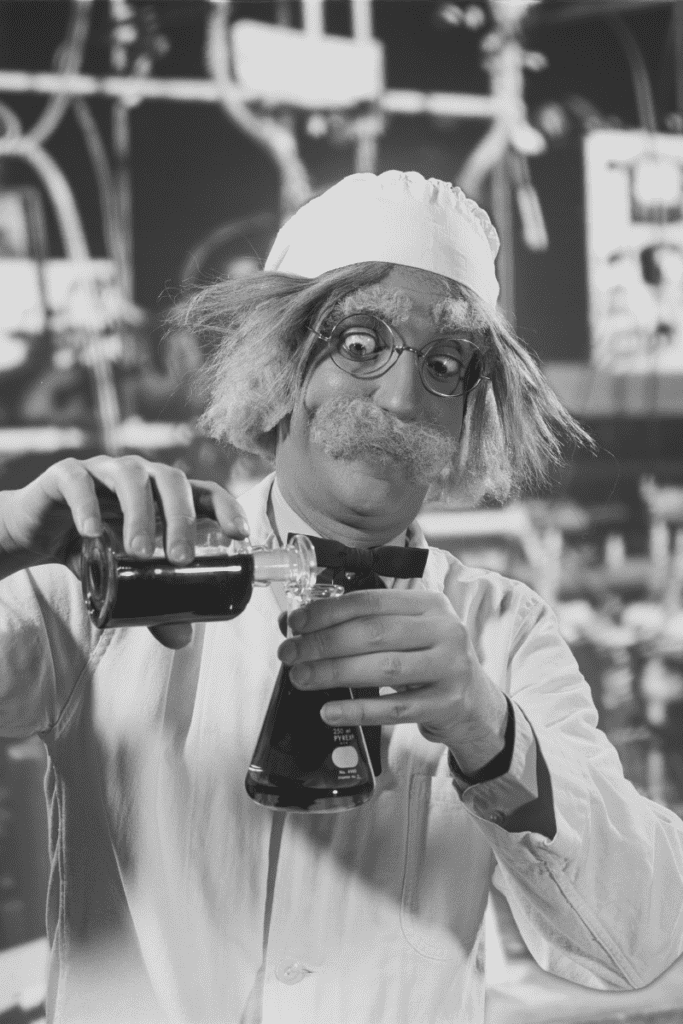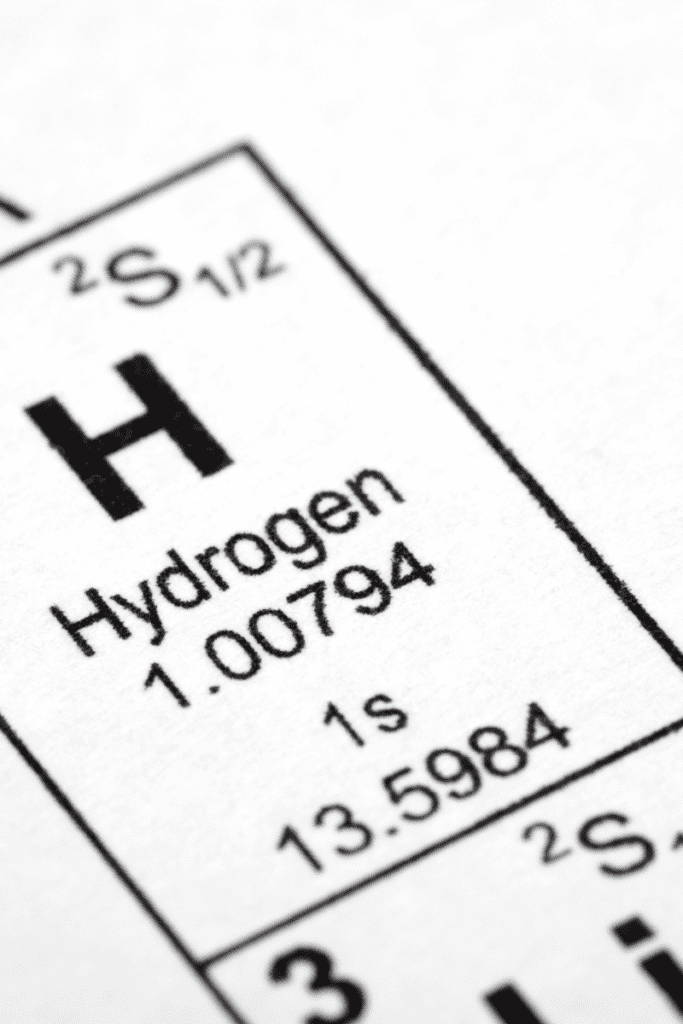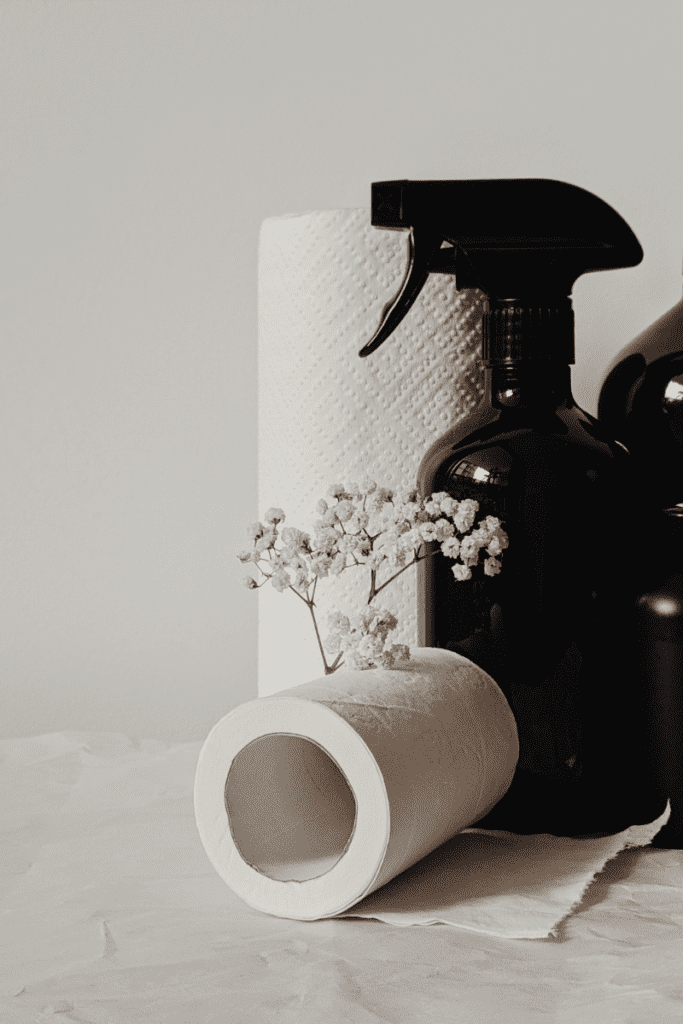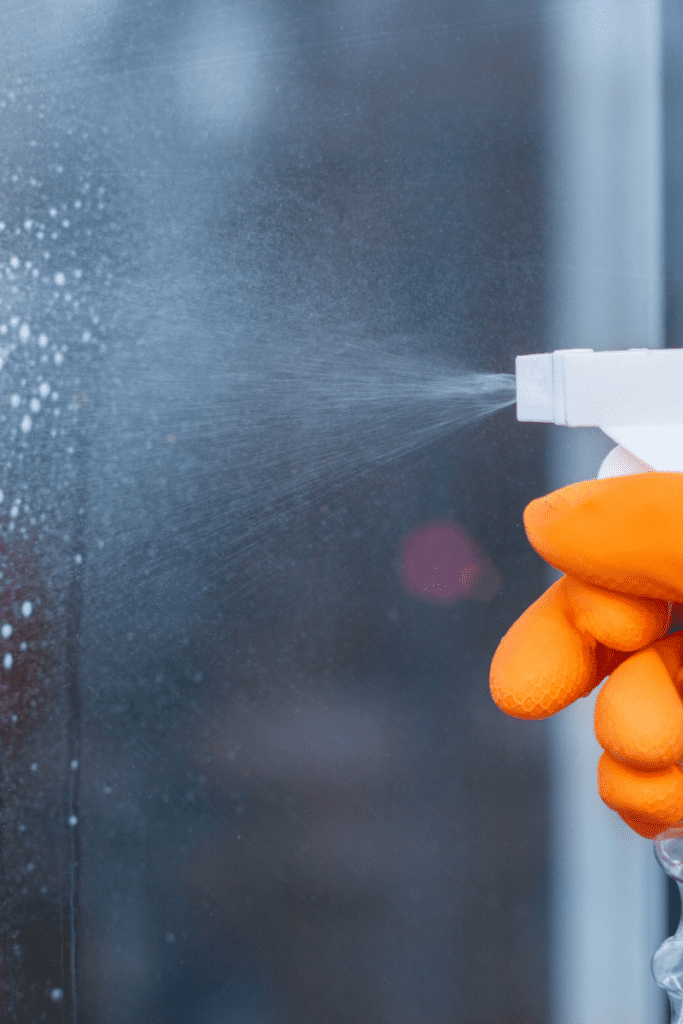This post contains affiliate links.
We all know that we should clean our homes often but sometimes there’s not enough time. That is, until now! If you’re looking for a way to make your cleaning routine more efficient and effective, then hydrogen peroxide may be the solution for you. This chemical has been used as an antibacterial agent since the late 1800s when it was first made by French chemist Louis Nicolas Clément.

Table of Contents
Where Does Hydrogen Peroxide Come From?
Cleaning with hydrogen peroxide might sound like some new science fiction movie from an action-adventure franchise but it’s actually a naturally occurring chemical that comes to us courtesy of the sun. When ultraviolet rays and moisture combine, they cause oxygen atoms to bond together into H2O2 rather than regular water – which is nice because we all know how much better our clothes will smell when they’re not being bleached!
It turns out this one has been around for centuries though nobody knew what was going on until recently; scientists first noted its existence back in 1774 thanks to English clergyman John Waller who discovered small bubbles coming off his glass after he left it outside overnight during a full moon.

Hydrogen Peroxide Disinfectant
So, Hydrogen peroxide is a powerful disinfectant that will kill bacteria like staph and viruses. But it can also be used to make your own all-purpose cleaner. To get the most from this product, look for 3-6% hydrogen peroxide solution. These are best at killing those pesky germs!
The potency of hydrogen peroxide will reduce as it is exposed to light. For optimal use, the CDC recommends storing your bottle in a dark container or keeping its contents under wraps with an opaque wrapper so that its concentration stays stable and effective at killing germs.
Never Mix Hydrogen Peroxide With Other Cleaners
With hydrogen peroxide being safe to use alone, it’s easy for you to clean without any worries of a chemical reaction. However, this doesn’t mean that mixing other household cleaning agents with hydrogen peroxide is a good idea. They can react and create toxic fumes or even blow up!
It is a great way to get rid of those pesky germs, but there’s an easy process you need to follow.
The CDC recommends that before disinfecting with hydrogen peroxide, first use soap and water then pour or spray your solution on the surface for 10-15 seconds.
You can either wipe it off using paper towels or sponges or just let it dry naturally. If left untouched by people (it should take about ten minutes).
Don’t Mix With Metals
Although, Hydrogen Peroxide’s biodegradability is one of its many charms. It can be dangerous, though! For example, concentrations over 30% should not be mixed with metals like copper and iron because explosions may occur.
A hydrogen peroxide explosion sounds like a blast from an atomic bomb – but only if it’s elevated to 30% concentration. For the most part, concentrations of 3-10%, which are common in our homes and offices for household cleaning purposes such as bleaching stains off clothes or killing bacteria on countertops, have no adverse effects other than some minor skin irritation after prolonged contact with these chemicals at high levels.
Hydrogen Peroxide is Non-Toxic
You know those people who are all like, “I can’t believe I just put hydrogen peroxide on my skin!” Yeah, me too. And yet here we both are.
Truth is, there’s a lot of misinformation out there about hydrogen peroxide and its uses in the home. It’s time to set some things straight because you deserve to know that this stuff is awesome for more than just your teeth!
Peroxide Multi-Surface Cleaner and Disinfectant
Cleaning with hydrogen peroxide has several advantages. The most important one is that it’s safe to clean with. It’s a non-toxic substance which won’t hurt the environment, cause pollution. While still being an effective disinfectant and cleaner! Therefore you can use H2O2 to effectively clean your child’s clothes (or their toys) as well as a dog’s bed. They’re just getting cleaned – not exposed to chemicals or germs.
How Long Should Hydrogen Peroxide Dwell?
After you’ve used hydrogen peroxide, make sure to leave it on the surface for at least one minute before drying. It’ll give enough time in order to kill all of those nasty pathogens and bacteria that might be lurking around!
What Can You Clean With Hydrogen Peroxide

Pet Mess
Clean up your pet’s messes with peroxide.
Your pets can leave a strong odour when they’ve gone potty indoors, use peroxide to make it smell fresh and clean.
Stain Remover
Remove stains from carpets by spraying the area with a mixture of 1 part water and 3 parts hydrogen peroxide, then scrubbing away the dirt
Grout Cleaner
Make a paste of baking soda and hydrogen peroxide for cleaning hard-to-reach places like between tiles or in grout lines on floors or countertops
Clean The Bath
Pour some into your bathtub before you shower to kill bacteria that may be lurking there (just make sure you rinse it out!)
Clean Fruit
Spray some onto fruit and vegetables before eating them to remove any chemicals they may have been sprayed with at the grocery store, always rinse well!
Clean Clothes
Remove stains from clothes.
If using peroxide to clean your clothes, make sure that you use only white clothing that is colorfast because bleach can damage colors in fabrics.
Toilet
Clean your toilet bowl
You can clean your toilet with peroxide to eliminate germs.
For cleaning your toilet bowl:
Spray some of the mixture onto a cloth towel and scrub at stubborn dirt spots until they’re gone. For really tough jobs like rust rings around toilets, mix 1 part peroxide and 3 parts water in a spray bottle . Spray the toilet and let it sit for a few minutes. Then scrub with an old toothbrush or sponge until you don’t see any rust left on the surface of the bowl.
Disinfect
Disinfect a kitchen sponge or dishcloth.
To disinfect a kitchen sponge or dishcloth, soak it overnight in peroxide.
The Fridge
Clean out the fridge and freezer with peroxide to kill bacteria, mold, and other germs that can grow in those places.
Window Cleaner
Make a window cleaner by mixing water with peroxide in a spray bottle.
Treat Mildew
Get rid of mildew on shower curtains, tile grout, and more with hydrogen peroxide solution (equal parts water and 3% hydrogen peroxide).
Hydrogen Peroxide All Purpose Cleaner
Use it as an all-purpose cleaner for counters, sinks, stovetops, refrigerator shelves – really anywhere you need to clean!
Just mix one part 3% hydrogen peroxide with nine parts water into a spray bottle and get cleaning!
This is also great for disinfecting cutting boards before using them again after they’ve been used to cut raw meat or poultry products
Treat Pongy Shoes
Put some inside your shoes overnight to kill odor-causing bacteria like staphylococcus epidermidis, pseudomonas aeruginosa, and proteus vulgaris.

Cautions for Hydrogen Peroxide
The only caution that you’ll need to take with hydrogen peroxide on hard surfaces is your countertops. If they are made of marble or granite, using hydrogen peroxide once in a while is okay but not for continual use. This is because it can break down the finish which makes cleaning difficult and dulls their shine over time. Additionally, bleaching agents contained within this product may cause discoloring depending on the surface type so make sure to test first if colored counters are present!
Hydrogen Peroxide Cleaner Recipe
Mix up your own natural and organic cleaners to give surfaces a refreshing scent.
Mixing hydrogen peroxide with other household items is an easy way to also clean them, while adding in some fragrance for the finishing touch. To make lemony fresh cleaners you would just follow this recipe:
- Mix 1 cup of peroxide and 2 cups of distilled water in a spray bottle.
- Add 5 drops of lemon grass essential oil and 5 drops of citronella, or 2 teaspoon of lemon juice.
- Give it a little shake to mix.
- Clean as usual.
Conclusion
In summary cleaning with peroxide leaves your home smelling fresh and clean, kills bacteria that can make you sick, and it’s cheap!
Now go enjoy your home without the yucky germs.
If you have any questions or comments please leave them below in the comment section.
More Natural Cleaning Posts
- Christmas Cleaning Tips For The Cleanest Most Organized Holiday!
- How to Remove Limescale from a Kettle?
- How To Keep Your House Clean With A Dog?
- Is Vinegar Good For Cleaning?
- Best Way to Clean Your Washing Machine
This post contains affiliate links.